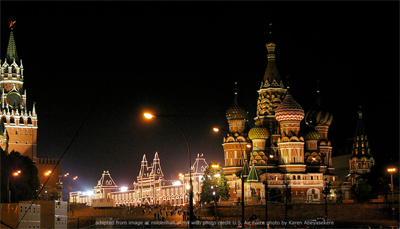Kremlin Might Not Have Enough Overall Manpower to Conquer Ukraine, and Putin Certainly Did Not Send Enough Russian Troops For Latest Invasion
Russia's entire military might not have enough manpower to conquer Ukraine, taking into account casualty ratios. According to conventional wisdom, casualty rations often are expected to favor a defensive force against an invader, with the defenders having a casualty ratio of 3 to 1 in their favor, perhaps as high as 10 to 1. That kind of phenomenon certainly is happening in Ukraine.
Russia apparently only has roughly 900,000 in military service. Meanwhile Putin reportedly has deployed only around 200,000 in, or near, the latest Russian invasion of Ukraine, actually an expansion and escalation of ongoing Russian aggression dating back nearly eight years.
Even in a direct numerical comparison, the force deployed is surpassed by Ukraine's military manpower, which exceeds 300,000, even before adding in large numbers of furious civilians armed by the Ukrainian government and trained to fight in concert with military regulars.
Yet those direct numbers are not even the end of the story. Conventional wisdom has sometimes held that defensive forces, already in place, already with logistics and equipment set up, perhaps fortified in some instances, can hold a 3 to 1 advantage in casualty ratios, compared with an invading force. It used to be said that sometimes such an advantage might even climb to 10 to 1.
If a country's military force was merely numerically large on paper, in name only, and not really ready to fight, it might be a different scenario.
Yet clearly Ukraine has been ready to fight, and has steadfastly been bolstered, including by training and equipment provided by Western allies interested in seeing those elements of the former Soviet Union striving to be free be able to sustain their efforts towards building a free, functioning society.
So Putin's force starts out, outnumbered to begin with, before even factoring in differentials in casualty ratios.
As expected, estimated casualty numbers, just for those killed in action, show a definitive numerical advantage for Ukraine. The tragic numbers of Ukrainian soldiers killed are said to be around 1,500 thus far, compared with as many as 7,000 to 15,000 Russian soldiers killed in action.
If Russian President Vladimir Putin and the Kremlin are intent on battling to the end, not only is their local force of 200,000 not big enough, if those trends hold. The entire Russian military would not be big enough.
Generally speaking, some of the factors that could contribute to casualty ratios might include the fact that a defensive force already is in place, perhaps even fortified, and has logistics in place. The invading force has to project personnel and equipment across large amounts of unfriendly open territory. In some cases one might even recall the emblematic images of Russian convoys strung out in the open, with smaller convoys bunched into longer lines of exposed equipment and personnel because of Russian equipment breaking down or running out of fuel and bunching up the rest. Then, among other factors, there are issues of motivation, and defensive forces motivated to defend their homes and homeland, and the support and cooperation, or even integrated involvement, of local populations.
The situation undoubtedly is aggravated by the lack of sufficient popular support with Russia, and lack of motivation, for what is an illegal war against a target normally regarded by average Russians as friendly neighbors. That illegality is combined with almost incompent planning and logistics, with outside opinions emerging that the Russian forces, already seeing growing numbers of equipment decimated, do not have adequate plans, frameworks, and methods in place for necessary ongoing supplies and logistics.
Also posing a threat to the Kremlin would be the vulnerability they would face if forced to deplete Russian military activities and military posture elsewhere to expand what efforts in Ukraine. Aside from the fact that the Kremlin is known for paranoia and xenophobia, and less likely to want to leave itself exposed elsewhere, as a practical matter it would be less capable of defending its own borders elsewhere.
One curious example is that of dealings with Japan, with whom the Kremlin apparently refuses to continue efforts to form a final peace treaty ending World War II. Russia and the Soviet Union were essentially cowards with regard to half of the geography of World War II, failing to even enter the war in the Pacific, despite proximity to the Japanese Empire, until the very end of the war. At that time, they rushed to declare war on Japan, when no war was left to fight, to essentially steal Japanese territory, Sakhalin Island and the Kuril Islands.
If Japan were to act upon the legal status of the Russian-occupied territories, rightfully belonging to Japan, as being territory merely occupied by Russia in a war that Russia has failed to formally end, a depleted Russian military redirecting forces towards their debacle in Ukraine would be exposed and ill-suited to do anything but retreat. The prospect of Japan simply sending Japanese forces to keep the peace, establish lawful order in that territory, and reclaim control of what is essentially Japanese territory merely occupied by a Russian presence would be far easier to envision if the Kremlin were forced to redirect forces to chase after its snowballing failures in Ukraine.
[please be sure to consider clicking the support button, to support this web project and related efforts]
Key Words: Russia, Putin, Kremlin, War Reparations, Ukraine, Russo-Ukrainian War, War Crimes, International Law, Corruption, Oligarchs, Russian Government
